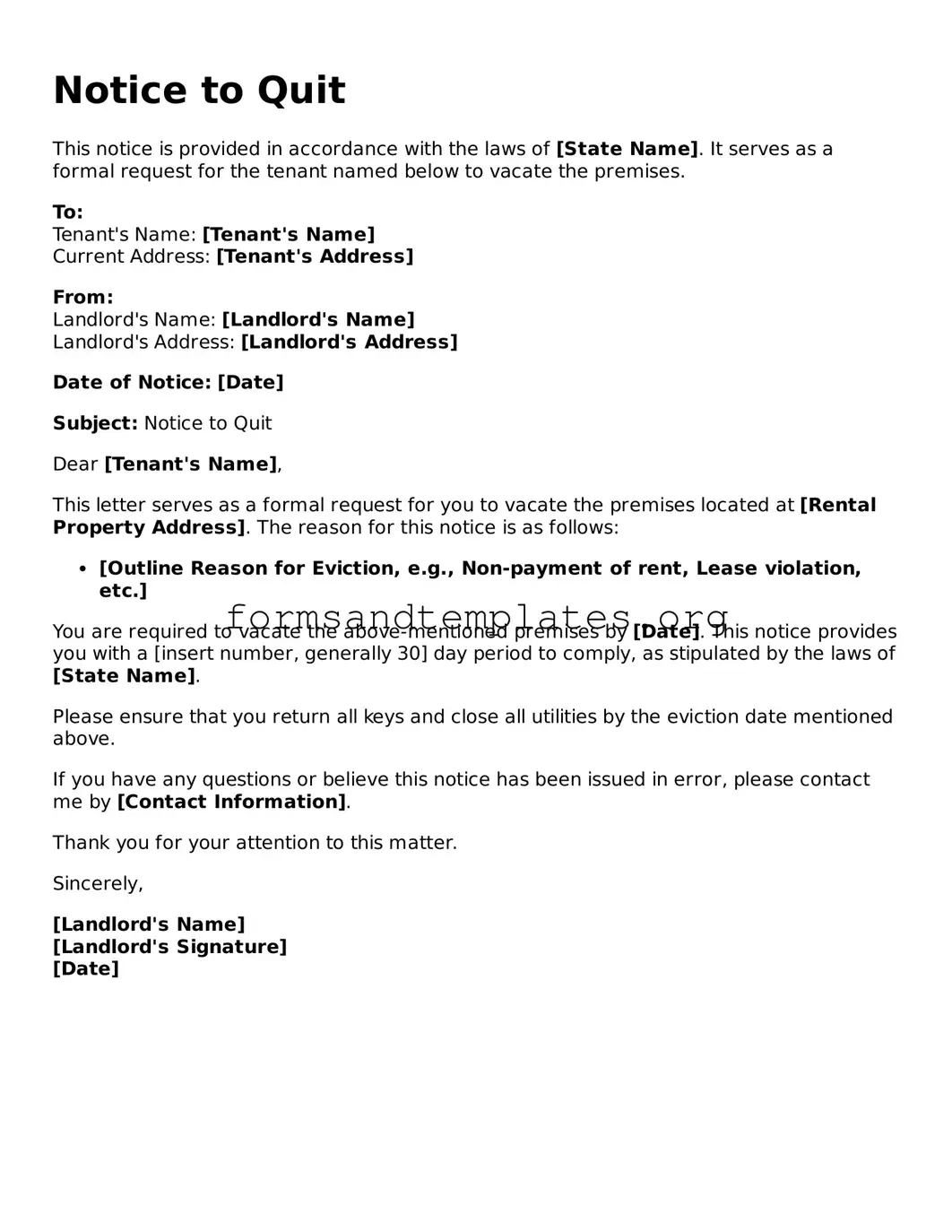Notice to Quit
This notice is provided in accordance with the laws of [State Name]. It serves as a formal request for the tenant named below to vacate the premises.
To:
Tenant's Name: [Tenant's Name]
Current Address: [Tenant's Address]
From:
Landlord's Name: [Landlord's Name]
Landlord's Address: [Landlord's Address]
Date of Notice: [Date]
Subject: Notice to Quit
Dear [Tenant's Name],
This letter serves as a formal request for you to vacate the premises located at [Rental Property Address]. The reason for this notice is as follows:
- [Outline Reason for Eviction, e.g., Non-payment of rent, Lease violation, etc.]
You are required to vacate the above-mentioned premises by [Date]. This notice provides you with a [insert number, generally 30] day period to comply, as stipulated by the laws of [State Name].
Please ensure that you return all keys and close all utilities by the eviction date mentioned above.
If you have any questions or believe this notice has been issued in error, please contact me by [Contact Information].
Thank you for your attention to this matter.
Sincerely,
[Landlord's Name]
[Landlord's Signature]
[Date]
